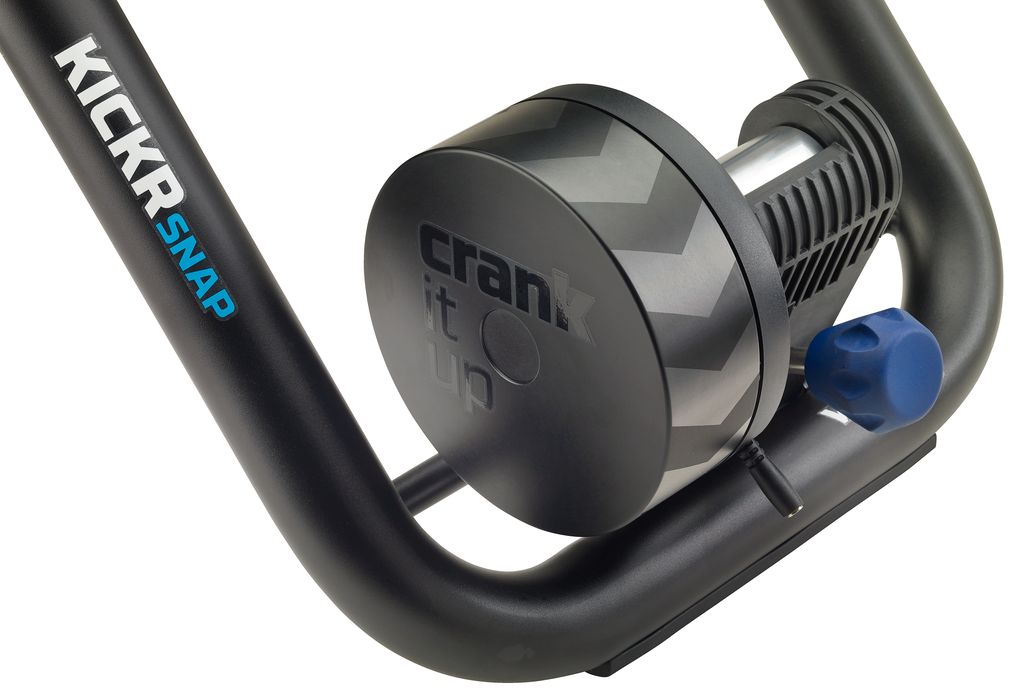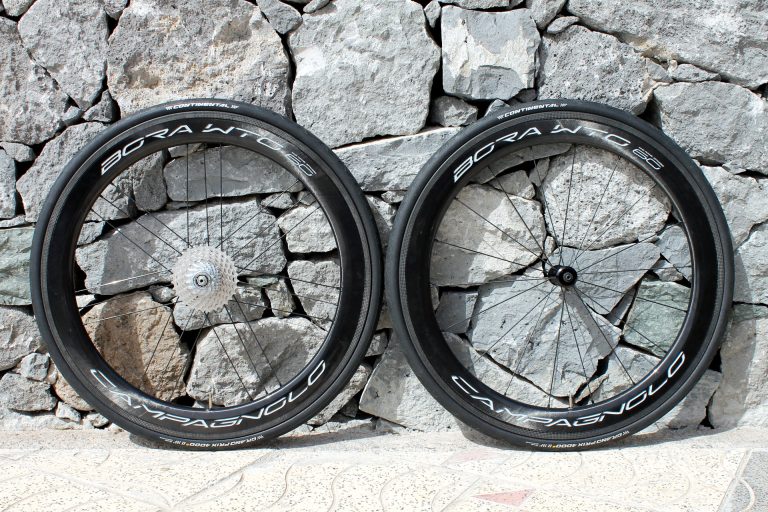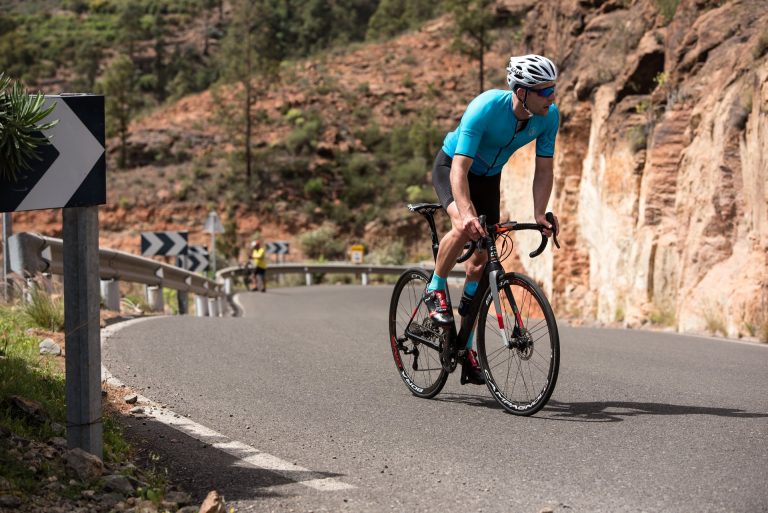After the success of their high-end KICKR direct drive turbo used by Team Sky, Wahoo Fitness have dipped back into the indoor trainer market by launching the more affordable KICKR Snap.
The Snap is basically the KICKR’s little brother, and Wahoo are positioning it as a tool for the newer or less experienced cyclist, with a slogan ‘train to ride’ as opposed to the KICKR’s ‘train to win’.

The original KICKR has a built in power meter, which is one feature that hasn’t been ported over to the Snap in an attempt to keep the RRP down. Instead, the trainer uses an algorithm to determine power output that has a claimed accuracy of +/-5%. Most power meters have a claimed accuracy of around +/-2%, but this will give you a rough idea.
But better than that, for existing power meter users, there’s an option to over-ride the in-built power measurement in the Snap and use your power meter instead, meaning you can get the resistance of the unit controlled by what your Quarq/SRM/Stages/Vector considers to be 300w, rather than what the unit thinks. This will be great for riders who want to train seriously indoors, as it means you’ll be training by the same unit that you use outside, meaning full consistency in your numbers.
Wahoo were pretty much the first company to focus on smartphone controlled fitness hardware, and like the KICKR, the Snap will be 100 per cent controllable through the Wahoo Fitness smartphone app (available on Android, iOS and Microsoft).
As you may have guessed, that means the Snap has Bluetooth Smart connectivity, meaning you don’t need an ANT+ dongle for your phone to control it, although the unit itself also has ANT+ connectivity so it can talk to third party sensors and power meters. Similarly, all apps developed to work with the KICKR will work with the Snap as well. One of the KICKR’s big selling points was its open API (application program interface) that allowed third-party developers to make apps that would work with the unit, and that’s set to continue for the Snap.

One of the key features of the unit itself is the 4.7kg flywheel, which plays a huge part in the road-like feel you get from the trainer. The flywheel has been a big selling point of both the KICKR and now the Snap (although the KICKR has a 5.7kg flywheel), as very few trainers on the market actually incorporate one, and those that do have gone significantly smaller on the weight. The Snap also has a maximum power of 1,100w, which is a sustainable output, as well – providing the user can also sustain that level, of course.
The unit itself weighs in at a hefty 17kg, which meant that on our brief test ride at the launch, even sprinting out of the saddle was met with very little extraneous movement. It also has the same quick response time when it comes to resistance change. When you’re running the unit with software like Zwift, it takes the KICKR Snap a claimed 1.2secs to adjust resistance, making for a very realistic feel when you’re riding.
While the KICKR retains its £949 RRP, the KICKR Snap comes in £300 less at £649. Check it out on the Wahoo Fitness website.
Wahoo Kickr Snap launch video a Other video by roadcyclinguk





